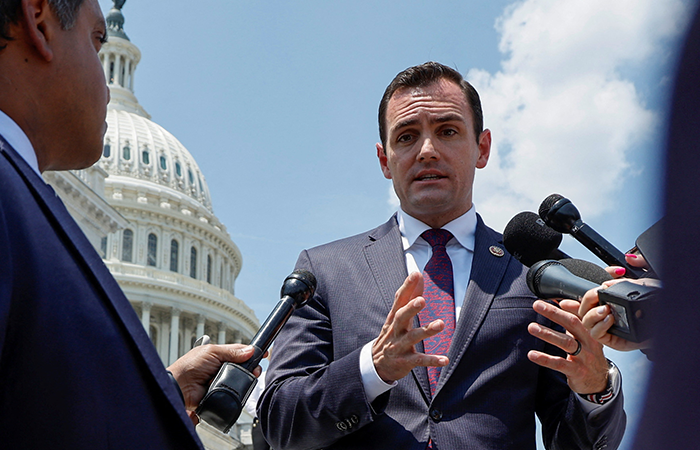Why Obama Is Worried
August 16, 2023
Barack Obama had a message for Joe Biden. In late June, according to the Washington Post, the two Democratic chief executives met for lunch in the White House residence. Obama said he would campaign for Biden vigorously in 2024, but that wasn’t the real purpose of the meeting. Obama wanted Biden to understand the stakes, and the risks, of a rematch against Donald Trump. The Post’s Tyler Pager reports that Obama is concerned Trump “could be a more formidable candidate than many Democrats realize.”
He’s right to be uneasy. Word of Obama’s White House visit broke during the same week in August as a New York Times/Siena poll showing Trump and Biden tied. The multiple federal and local indictments leveled against Trump have done nothing to shrink, at the time of this writing, his 36-point lead in polls of Republican primary voters.
The former president is also competitive in the general election. As of August 6, Biden leads Trump by a single point in the RealClearPolitics polling average. CNN analyst Harry Enten grabbed the political class by the lapels when he wrote in midsummer that Trump’s head-to-head matchup numbers are better “than at any point in the 2020 cycle and almost at any point in the 2016 cycle.”
True, national surveys conducted over a year before Election Day are notoriously unreliable. Neither party has selected its nominee, and a lot can and will happen during the intervening months. Yet Democratic anxiety is not based on polling alone. Obama isn’t refreshing the “Trump vs. Biden” page of RealClear every minute. Something else is bugging him. We know what it is: the mixture of apathy and antagonism that the electorate feels toward Biden.
Obama would never admit in public to Biden’s flaws. In fact, the Post went out of its way to report that “Obama made it clear his concerns were not about Biden’s political abilities, but rather a recognition of Trump’s iron grip on the Republican Party.” If you are like me, you chuckled when you read those words. They are pure spin.
Trump’s “iron grip” on the GOP may help him in a primary. It may help him turn out supporters. But independent voters will decide the winner of the general election based on their assessments of Biden. And right now their appraisal is withering. Trump’s current strength is really a function of Biden’s weakness.
Biden’s polls are a Russian nesting doll of bad news. His overall approval numbers, averaging in the low 40s, have entered the reelection danger zone. His marks on the most important issue for voters—the economy—are worse still. And the August CNN poll found that his rating for handling inflation is below his terrible rating on the economy.
Biden’s polls do not compare favorably with those of his predecessors. “Of the 11 post–World War II U.S. presidents elected to their first time,” writes Gallup’s Megan Brenan, “just one—Jimmy Carter—had a lower 10th-quarter average approval rating than Biden.” That’s company Biden doesn’t want to keep.
Obama must find Biden’s lukewarm relationship with his party especially troubling. Though Biden has an overwhelming lead over his two challengers for the Democratic nomination, he commands a little less than two-thirds of the primary vote. That is an alarming percentage for an incumbent. It implies a lack of enthusiasm. Another sign of disinterest is that small-dollar donations to Democrats are down compared with this point in the 2020 campaign.
Biden doesn’t generate the same fervor and loyalty that Obama once did among Democrats, and that Trump continues to do among Republicans. A recent Washington Post study of Census Bureau data found that black voter turnout declined by 10 points between the 2018 and 2022 midterm elections. Black men are drifting away from the left. So are Hispanic voters of both sexes.
These voters are not happy with this economy. No one is. Educational attainment and political ideology, moreover, are becoming better indicators of partisanship than race or ethnicity. “The beginning of wisdom,” wrote my American Enterprise Institute colleague Ruy Teixeira in the Liberal Patriot newsletter, “is understanding that the nonwhite working class is not particularly progressive while the Democratic Party has become more so.” Biden has presided over this shift while doing little to stop far-left activists from coddling criminals, exploiting asylum loopholes, and imposing transgenderism on school curricula and girls’ sports.
Liberal pundits reassure themselves by comparing Biden to Ronald Reagan. At this point in his first term, Reagan’s approval ratings were also stuck in the low to mid-forties. What the late Wall Street Journal editor Robert L. Bartley deemed the “seven fat years” of economic prosperity under Reagan were just beginning. Then, in 1984, Reagan rode a wave of positive economic data to his landslide reelection over former vice president Walter Mondale.
Biden wants to do the same. He can point to some good data: Inflation, unemployment, and interest rates are all lower today than they were 40 years ago. Factory construction is booming this year thanks to government subsidies for green energy and semiconductors. “Biden should be cruising to an easy reelection victory,” New York Times columnist David Brooks wrote in June.
He isn’t, says Brooks, because Americans under Donald Trump endured “a collective moral injury, a collective loss of confidence, a loss of faith in ourselves as a nation.” Economics writer Noah Smith argues that, while Reagan capitalized on Americans’ eagerness to move on from Vietnam and Watergate, Biden suffers from a dyspeptic national mood. And Joe Klein writes that Biden’s Reaganite optimism is subverted by the left-wing bent of his party on social and cultural issues.
These psychological and institutional explanations for Biden’s troubles assume that the problem lies outside the White House. They tend to discount the president’s capacities and competence. This is a mistake. Biden is not the victim of national malaise. He is its cause.
Voters in both parties have said for years that Biden is too old to serve a second term. No unemployment report will change that sentiment. Biden’s age and infirmity limit his interactions with voters and the press and prevent him from connecting with the public. When he does appear before the cameras, he paints a misleading picture of the nation and labels his opponents extremists. His policies contributed to the inflation that has lowered the American standard of living.
The blizzard of Trump news obscures Biden’s multiplying setbacks. Over the summer, Fitch downgraded the U.S. credit rating. The price of gas is rising. The Strategic Petroleum Reserve is at its lowest level in 40 years. After an early summer lull, illegal border crossings are up. New York City has nowhere to put migrants. The Ukrainian counteroffensive has yet to punch through Russian defenses, and the U.S. military is out of ammunition. Just one of these crises would be enough to strain the capacities of a White House. Biden is lackadaisical about them all.
Democrats are convinced that the prospect of a second Trump administration will scare voters into reelecting Biden. Probably they are right. Scratch the surface, however, and you see that Democratic confidence is paper-thin. As the summer of 2023 draws to a close, Trump is dominant. Biden is struggling. And Obama is worried.

